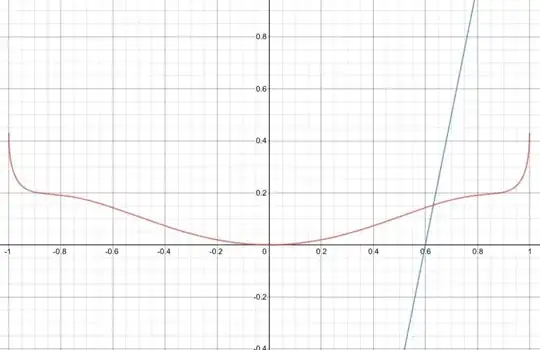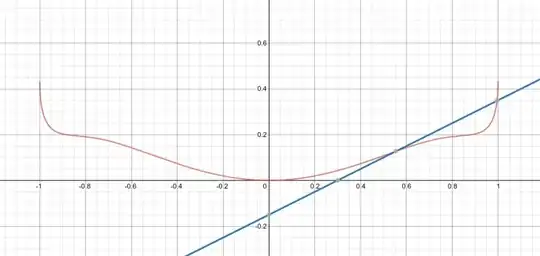I apologize for any formatting mistakes, first time here.
I'm currently working on program in Java as a personal project that simulates and allows for the design of a lens system with surfaces generally defined using the equations covered here (Wikipedia). In this case the "order" of the surface referring to the greatest axrx value. Although possible, I'm pretty sure the order rarely is above 12.


The linked images show two possible cases for a complex aspherical lens defined using this particular equation.
Assuming a "ray" comes from somewhere below the frame upwards as seen in the examples, how would I calculate the first point of collision between that ray and the lens surface? Specifically in three dimensions, as the examples above are only two dimensions as limited by Desmos. Being a lens, the resulting surface in three dimensions is possesses rotational symmetry where the 2D examples have reflection symmetry.